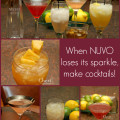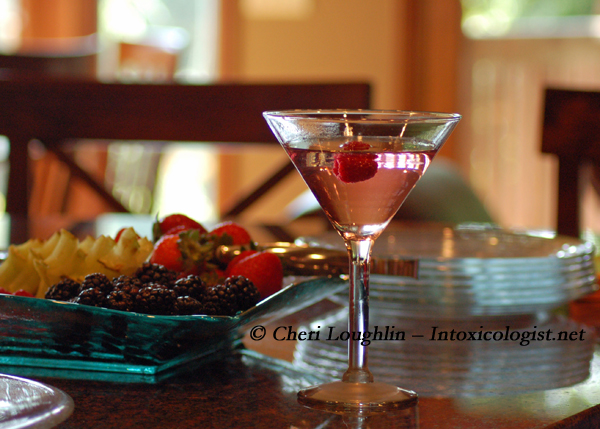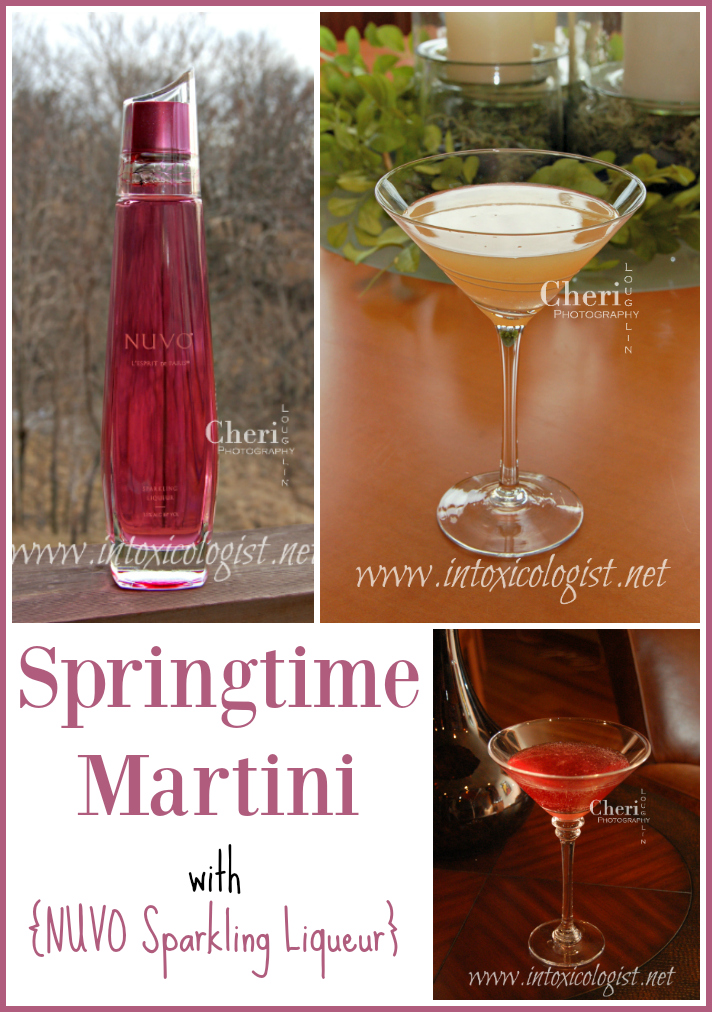 Springtime calls for lighter cocktails with fruitier flavors of the season. A little bubbly tickle to the nose is wonderful, too. NUVO Sparkling Liqueur shared two Springtime Martinis with me.
Springtime calls for lighter cocktails with fruitier flavors of the season. A little bubbly tickle to the nose is wonderful, too. NUVO Sparkling Liqueur shared two Springtime Martinis with me.
Springtime Martini Recipes
Springtime Martini #1
This Springtime Martini pegs the name and color for the season. It’s lightly bubbled with citrus notes. I’m usually all in for fresh fruit and juices. But this turned out a little too perfumed in my opinion. NUVO is light and sparkly, but the peach nectar seemed to weigh it down. Next time I would swap peach nectar for peach schnapps.
 Springtime Martini #1
Springtime Martini #1
2 ounces Vodka
1/2 ounce Peach Nectar
1/4 ounce Fresh Lime Juice
1 ounce NUVO Sparkling Liqueur
Place vodka and juices in cocktail shaker with ice. Shake to blend and chill. Strain into chilled martini glass. Top with chilled NUVO Sparkling Liqueur.
Springtime Martini #2
Take a close look at this next Springtime Martini. It sounds a lot like a Cosmo sans lime juice. The recipe as sent to me was written in parts with cranberry splash, topped with NUVO.
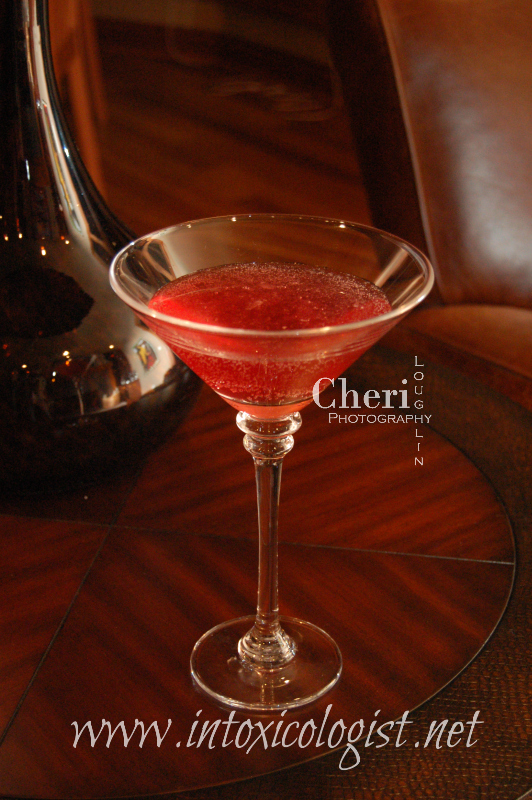 Springtime Martini #2
Springtime Martini #2
1 ounce Vodka
1/2 ounce Cointreau Orange Liqueur
1/2 ounce Cranberry Juice
NUVO Sparkling Liqueur
Lime Wheel Garnish
Place vodka, liqueur and juice in a cocktail shaker with ice. Shake until well-chilled. Strain into a chilled cocktail glass. Top with NUVO Sparkling Liqueur. Garnish with lime wheel if desired.
What Is NUVO Sparkling Liqueur?
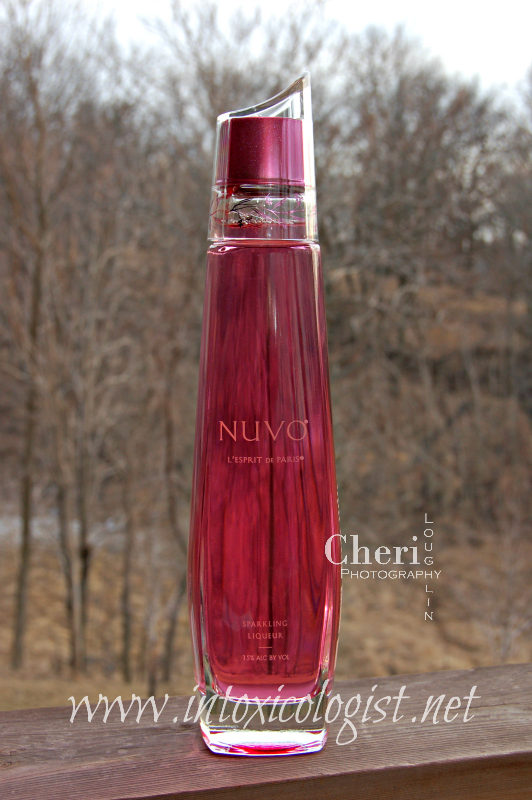 NUVO Sparkling Liqueur is vodka infused with French sparkling wine. The wine is predominantly chardonnay with a touch of pinot noir. Its fruit forward flavor comes from an infusion of raspberries, peaches and strawberries. This liqueur is best served well-chilled. It is sparkling liqueur, so it needs to be consumed immediately or capped and consumed within 18 to 24 hours. Think of it as a good reason to invite friends over to share.
NUVO Sparkling Liqueur is vodka infused with French sparkling wine. The wine is predominantly chardonnay with a touch of pinot noir. Its fruit forward flavor comes from an infusion of raspberries, peaches and strawberries. This liqueur is best served well-chilled. It is sparkling liqueur, so it needs to be consumed immediately or capped and consumed within 18 to 24 hours. Think of it as a good reason to invite friends over to share.
What do you do if NUVO Sparkling Liqueur goes flat? We have some cocktail recipes to help bring the sparkle back.
Splashes, Toppers and Parts
I’m not a fan of vague recipe measurements like splashes and dashes. And I’m really not a fan of cocktails that just consist of an ingredients list without measurements. That’s a menu, not a recipe.
When a recipe calls for parts or measures, I usually convert 1 part or measure to 1 ounce, 1/2 part or measure to 1/2 ounce and so on.
When a recipe calls for a splash of something it’s difficult to know exactly how much that is, especially when a recipe is written in parts. Typically a free pour bartender uses a count of four to equal 1 ounce. Splashes would be considered a one count to equal 1/4 ounce.
Toppers are even more difficult to judge. If you’re using a larger glass than the recipe intended, then your drink will have more topper than a smaller glass. If the recipe I’m making is served in a cocktail glass, my general rule of thumb is the topper should not exceed the volume of the other recipe ingredients. If the recipe ingredients amount to 2 ounces in volume, I would use 2 ounces or less for the bubbly topper. I usually add a little, taste and then add additional bubbly if needed.
If I’m making a long or short drink my go-to rule of thumb is 1/2 ounce topper for short drinks and 1 ounce topper for long drinks.
Subscribe to the monthly Newsletter
All content ©2016 Cheri Loughlin, The Intoxicologist. All Rights Reserved. Chat with Cheri @Intoxicologist on Twitter and facebook.com/Intoxicologist
Cheri Loughlin is the Omaha writer and photographer behind www.intoxicologist.net and author of Cocktails with a Tryst: An Affair with Mixology and Seduction. You can email Cheri with comments and questions at str8upcocktails@gmail.com.


